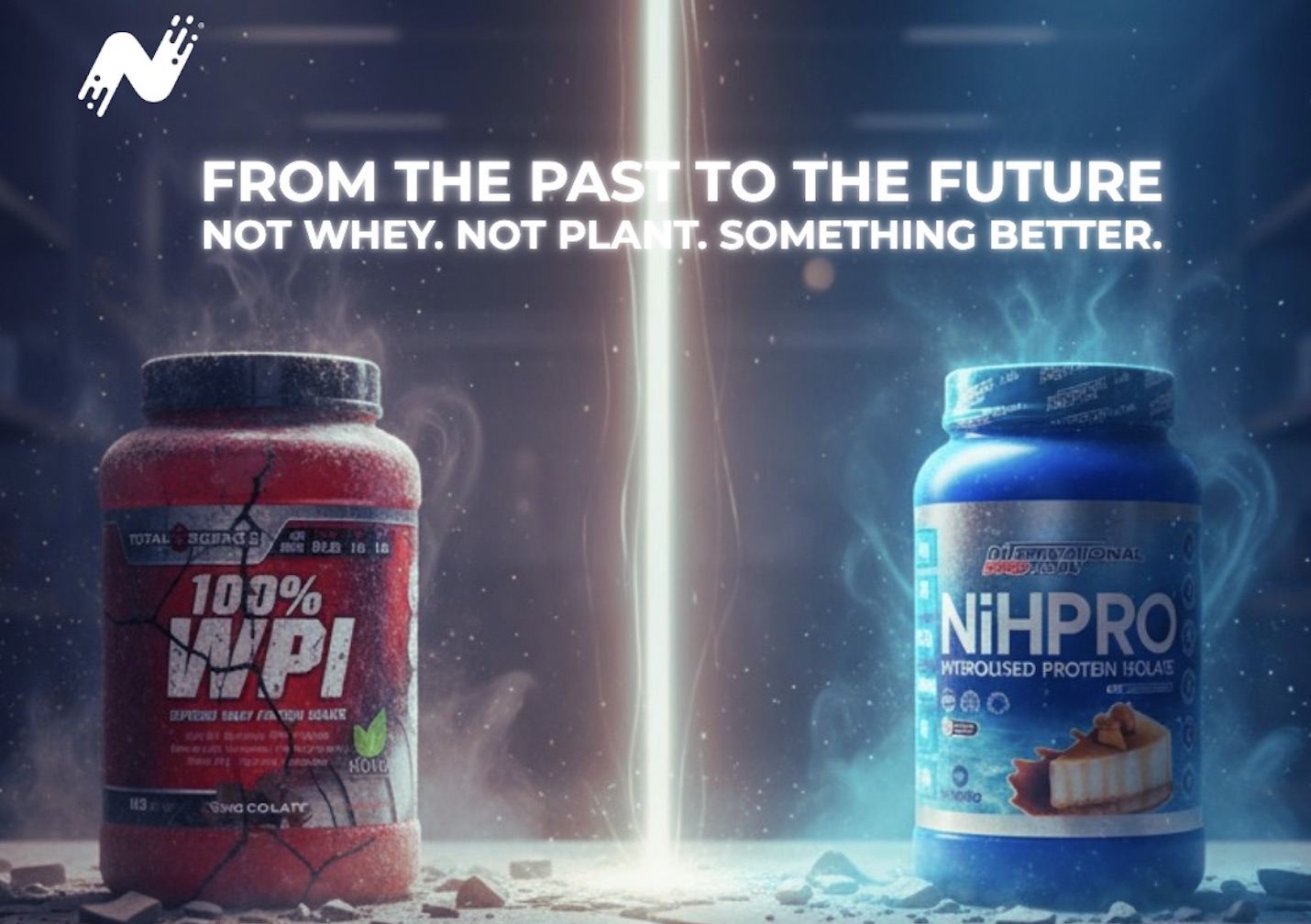Editorial by Dr. Seiji Aoyagi
Chief Science Officer, NiHTEK®
- Chief Science Officer at NiHTEK®
- 35+ years in sports & clinical nutrition (Japan)
- Leads NiHPRO®Family (Core, Bev, Puffs) & KARBFiX® science
- Guides APH™ & MPi™ technology programs
- University/hospital collaborations on human studies
- Champion of third-party validation (Informed-Choice®, Informed-Protein®)
- Principal scientific spokesperson for “Protein For EveryBODY™”

These days, athletes will do almost anything for an edge. Supplements are everywhere — promising faster recovery, more muscle, longer endurance, and, honestly, just feeling healthier all around. But there’s a real catch: those benefits come with real risks, especially if you care about playing fair. Even a supplement that looks harmless can land you in trouble if it’s hiding a banned substance. If you care about sport, your health, or just doing things the right way, you need to know how supplements and anti-doping rules fit together.
Why Athletes Use Supplements
Supplements aren’t supposed to replace real food — they just fill in the gaps. You’ll see them in every form: pills, powders, shakes, bars. Inside, you get vitamins, minerals, protein, amino acids, herbs, or other stuff that’s supposed to help
Used properly, they can fill nutritional gaps. For example:
- Protein supplements helps your muscles recover after a tough workout.
- Iron supplements gives you a lift if you’re dealing with anaemia.
- Electrolyte drinks keep endurance athletes hydrated, especially during long sessions.
With a plan and some good advice, supplements can boost your performance and health. But it’s not as simple as just grabbing whatever’s on the shelf.
The Anti-Doping Landscape
Competitive sports have strict anti-doping rules. The World Anti-Doping Agency (WADA) puts out a Prohibited List every year — it covers a whole range of banned stuff: anabolic agents, stimulants, peptide hormones, masking agents, gene doping, and more. If you’re an athlete, you’re under strict liability, meaning you’re on the hook if something banned shows up in your system, even if you never meant to cheat.
That’s why supplements are risky. Even if you never meant to break the rules, one wrong ingredient can still cost you.

The Hidden Threat: Supplement Contamination
The big problem isn’t always what’s supposed to be in the supplement — it’s what sneaks in. Studies keep showing that plenty of supplements have stuff not listed on the label, including banned drugs like anabolic steroids or stimulants.
How does this happen?
- Manufacturing practices are weak (cross-contamination).
- Sometimes they make banned substances in the same place they make your protein powder.
- companies just spike their products to make them seem more effective.
The thing is, supplements don’t go through the same safety or quality checks as regular medicines. Nobody’s double-checking what’s inside before they end up in stores. So even if you think you’re playing it safe, there’s no real promise that a “safe” supplement actually is.
Common High-Risk Supplement Types
Some types of supplements that often show up in doping violation cases:
- Pre-workout boosters: Pre-workout boosters can be risky. They pack a punch with stimulants like DMAA, which sports organizations ban.
- Fat-burners and weight-loss pills: you’ve got fat-burners and weight-loss pills. These are sneaky—they sometimes slip in hidden stimulants or diuretics just to make you drop water weight fast. All in all, these products pop up a lot in doping cases.
- Muscle-growth formulas: These can be contaminated with steroids or SARMs.
- Herbal or traditional remedies: You might find banned stuff like ephedra or yohimbine, or get hit with weird interactions.
Labs can catch even tiny traces of banned substances. If you’re using any of these, you need to be extra careful.
Health Risks Beyond Doping
It’s not just about getting banned from competition. Using contaminated or poorly regulated supplements is a health risk too:
- Cardiovascular issues: Stimulants can push your blood pressure and heart rate way up, sometimes leading to serious heart trouble.
- Liver & kidney damage: Taking anabolic substances or loading up on huge doses of vitamins? That can hit your liver and kidneys hard.
- Hormonal disruptions: Steroids can impact your hormones adversely, resulting in mood swings, fertility issues, and a plethora of other problems.
- Psychological issues: if you’re on strong stimulants, you may experience anxiety, sleep problems, irritability, or even addiction.
So, you’re not just risking your career — you’re risking your health.

How to Minimise Your Risk of Inadvertent Doping
If you want to stay safe, here’s what actually helps:-
- Educate & stay up-to-date: Know what’s on the current WADA Prohibited List. Read the fine print on supplements. Use your local anti-doping resources.
- Food-first approach: Before you take a supplement, ask yourself if you can get the same benefit from real food and better training.
- Choose third-party tested products: Pick supplements that have real third-party testing. Look for certifications from groups like Informed Choice or NSF Certified for Sport—they check for banned stuff, so you know what you’re getting.
- Keep detailed records: Keep track of everything. Jot down the brand, batch number, when you bought it, and keep your receipts. If anyone ever questions you, you’ll have the details ready.
- Seek professional advice: Don’t go it alone. Before you try something new, talk to someone who knows the anti-doping rules—a sports doc, a dietitian, or a pharmacist.
- Avoid risky categories or wild claims: Be careful with anything that sounds too good to be true. If a label says “instant fat loss” or “muscle in 7 days,” that’s a big warning sign.
Those products usually come with a higher risk of contamination or sketchy ingredients.
Ethical & Psychological Considerations
It’s easy to feel the pressure — from competition, coaches, peers or social media — to gain an edge. That’s often what drives the use of supplements. But the ethical line is thin: using a banned substance (intentional or not) undermines fair play, trust and the athlete’s integrity.
Psychologically, athletes who end up testing positive (even from contaminated supplements) face huge fallout: stigma, loss of identity, stress and damage to career and reputation. It’s not only about performance — it’s about who you are as an athlete and person.
The connection between taking supplements and risking anti-doping violations isn’t simple, and honestly, people need to pay attention. Supplements can boost your performance and help your health if you know what you’re doing. But if you’re careless, they can land you in real trouble. If you want to steer clear of problems, you have to stay sharp.
Know what’s in your supplements. Make good choices. Don’t take shortcuts. Clean sport goes way beyond ticking boxes or sticking to the rules. It’s about owning your actions, staying honest, and actually caring about your health and what’s fair—not just for today, but for the future.

And hey, it’s not only on the athletes. Coaches, organizations, and regulators all have a part to play. When everyone does their bit, we’re not just keeping the sport safe. We’re looking out for the people who give everything to compete.
References
- Maughan, R. J., et al. (2018). British Journal of Sports Medicine, 52(7), 439–455.
- World Anti-Doping Agency (WADA). (2025). The World Anti-Doping Code: The 2025 Prohibited List. https://www.wada-ama.org
- Backhouse, S. H., et al. (2016). International Journal of Sport Policy and Politics, 8(1), 131–152. https://doi.org/10.1080/19406940.2015.1063521
- Geyer, H., et al. (2008). International Journal of Sports Medicine, 25(2), 124–129.
- de Hon, O., et al. (2015). Sports Medicine, 45(1), 57–69.
- Outram, S., & Stewart, B. (2015). International Journal of Sport Nutrition and Exercise Metabolism, 25(1), 54–59.
- Martínez-Sanz, J. M., et al. (2017). Journal of the International Society of Sports Nutrition, 14(1), 1–9.
- Baume, N., et al. (2006). Scandinavian Journal of Medicine & Science in Sports, 16(1), 41–48.
- Nieper, A. (2005). British Journal of Sports Medicine, 39(9), 645–649.
- Whitaker, L., et al. (2014). International Journal of Drug Policy, 25(6), 1070–1080.





